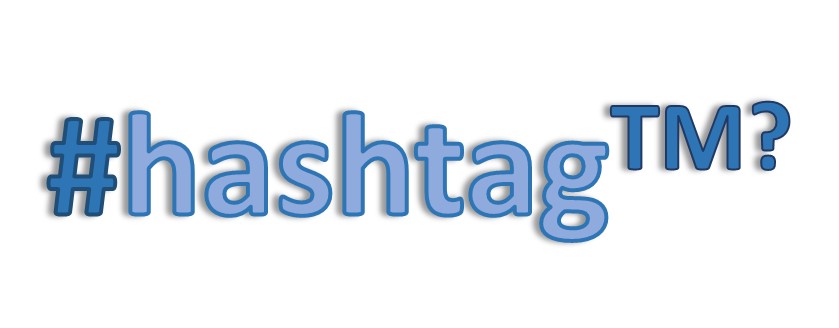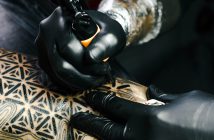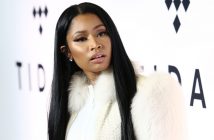The election of Donald Trump as President has already shattered many conventions, but one the Twitter-crazy billionaire hasn’t taken on yet is trademarking some of his most infamous hashtags, #MakeDonaldDrumpfAgain, #NotMyPresident.
The U.S. Olympic Committee, however, did break with tradition this summer. In fact, if you tweeted about the Rio Olympics, you probably used a trademark-protected hashtag.
Most people likely don’t realize that such hashtags do already exist, and more entities who do own trademarks on them may police their IP as a result. The USOC during the Olympic Games distributed a warning letter to companies that sponsor sports and athletes but aren’t associated with the USOC. The letter reminded them in no uncertain terms that the USOC owns trademarks on #Rio2016 and #TeamUSA.
Clearly, the USOC is worried about large companies making false associations, but in issuing a warning, it’s stepped into uncharted legaltech waters and has raised new questions about the implications of social media use, the protection of free speech, and the potential need now to legally navigate it all.
“It’s absolutely new legal territory,” said Robert T. Sherwin, an assistant professor of law at Texas Tech University who warned against extending trademark law to hashtags in the Spring 2016 issue of the Harvard Journal of Law & Technology. “Although hashtags have been around for a few years now, the use of hashtags as part of marketing campaigns is just starting to take off. It’s not surprising that as more and more companies integrate social media into their overall advertising plans, they want to take advantage of all the different components that social media offers—including the ability of hashtags to focus and extend a particular conversation. And as companies invest more and more money into those marketing campaigns, it makes sense that they would want to do everything possible to protect those investments through the legal system.”
The hashtag has become one of the most powerful marketing and organizing tools of the 21st century, wielded by everyone from Arab Spring organizers to the Ice Bucket Challenge campaign. But it didn’t originate on Twitter. Hashtags date back to Internet Relay Chat, an Eighties-vintage messaging system.
Now, they are increasingly being considered intellectual property. Alexandra J. Roberts, an assistant professor at the University of New Hampshire School of Law who teaches and writes on IP and trademark issues and serves on the academic committee for the International Trademark Association, said that, by using the U.S. Patent and Trademark Office’s website and search engine, she and a research assistant had found that exactly 200 hashtags were successfully registered by the end of 2015.
The USPTO states in its Trademark Manual of Examining Procedure that hashtags can be protected under trademark law, and even updated the TMEP in 2013 to take hashtags into consideration.
But the TMEP is specific on the matter, stating that a hashtag can be registered and trademarked only if it “functions as an identifier of the source of the applicant’s goods and services.” In other words, slapping a # in front of an otherwise unregistrable, “merely descriptive or generic” phrase won’t cut it.
In the process of evaluating whether a mark is eligible for registration, the USPTO considers which category of distinctiveness it falls into: generic, descriptive, suggestive, arbitrary, or fanciful. This categorization determines the degree of protection a mark will receive. The question is: if people see a mark in the market, will they recognize it as a specific product?
If the USPTO deems a mark arbitrary, fanciful or suggestive and there are no other bars to eligibility, then it can be registered. Fanciful marks are often invented words for the purposes of trademarking something. Think “Kodak” for cameras. Arbitrary phrases are common words, but aren’t related to the product. There’s no sensible link between apples and computers, so Apple Inc. easily passes the test.
Suggestive marks hint at the connection, but in order to pass muster they require a bit of a mental leap, such as inferring that an “Airbus” is a large airplane.
Things become trickier with descriptive marks. Initially, they can’t be trademarked. But over time and with use, such marks can acquire distinctiveness. Consider the situation with WeightWatchers.com Inc. While the name describes what the weight-loss company does, it’s been around for so long that people now associate those words with the company itself.
If the USPTO finds a mark to be generic, it won’t be granted eligibility. Generic marks can’t identify the source because they identify the good itself. So the USPTO won’t, for example, approve a trademark for “Apples” brand apples.
So, how has this played out in court so far? The legality of trademarking a hashtag is murky, given how two cases directly involved with it resulted in two opposite outcomes.
Eksouzian v. Albanese, which was tried in the U.S. District Court for the Central District of California, was a dispute between two electronic cigarette sellers (Vape A Cloud Inc. and Cloud V. Enterprises, v. Cloud Vapez) and was one of the first cases to deal with hashtag trademarking.
That court had previously placed certain restrictions on both the plaintiff’s and the defendant’s use of the word “cloud.” Cloud Vapez could only use the word “cloud” as part of a unitary mark, while the court restricted Vape A Cloud Inc. and Cloud V. Enterprises’ use of the word ‘cloud’ in certain situations.
But the companies found themselves in court again after Cloud Vapez claimed that Vape A and Cloud V. violated that agreement in a hashtag. The federal district court ultimately ruled on Aug. 7, 2015, that hashtags are not trademarks because they are “…merely descriptive devices, not trademarks, unitary or otherwise, in and of themselves.”
“What happened in this case is that some really kind of broad pronouncements got made, like ‘a hashtag is not a trademark,’ and I think that put a lot of people on high alert,” said UNH’s Roberts.
Next came Fraternity Collection v. Fargnoli in the U.S. District Court for the Southern District of Mississippi, Northern Division. The two parties had collaborated on a tee shirt design before going their separate ways. Then, Fargnoli went on to sell the clothing alongside one of Fraternity Collection’s competitors but used the hashtags #FratCollection and #FraternityCollection when advertising the designs on social media.
Tagging a rival’s product on a post is a tricky tactic to draw the attention of customers who are seeking a similar product, but this time it resulted in a lawsuit for false advertising and trademark infringement. The case was ultimately settled and dismissed on March 31, 2015, but it opened the door to future lawsuits of this nature.
“It’s not that unusual, especially when an issue like this is new, to get federal district courts in different circuits leaning different ways on these issues,” Roberts explained. “And the court looked at that and said, “Yeah, we’re not going to throw this case out because we can see that it’s conceivable consumers can be deceived.”
Lawyers and academics have started tackling the hashtag-as-intellectual property issue in articles in several legal journals, invoking a mixture of practical and ethical considerations in pieces that mostly argue against hashtags being trademarked.
In the Iowa Law Review, law professor Anupam Chander and a postdoctoral scholar, Uyên P. Lê, both of the University of California, Davis, state that “…the law regulating cyberspace becomes the law regulating speech.”
They warn that our current state of free speech online is up for grabs. “The hashtag served as a democratizer of speech, allowing anyone to have her thoughts echoed around the world,” they write. “No one has the power to exclude someone from a conversation. No one can un-hashtag someone else’s speech. The hashtag is free and open, not trademarked or copyrighted.”
Texas Tech’s Sherwin, in his Harvard Journal of Law & Technology article, argues that the nature of a hashtag is to get the phrase seen by as many people as possible, and trademarking is antithetical to that purpose.
Sherwin cautions that one purpose that trademarking hashtags does serve is to grant trademark holders the legal right to stifle conversations that turn sour. It’s an interesting point considering Trump has a history of blocking those who speak unfavorably about him on Twitter.
“Use of litigation as a tool to silence critics,” he writes, “is nothing new; it happens frequently in the defamation context, and…with copyright cases. Could trademark infringement cases be the new weapon in a bully’s arsenal?”
Still, hashtag hijacking, or the takeover of a hashtag by a group of people who leverage the hashtag for a different purpose, has become something of a cultural phenomenon.
While some of these hijackings have been entertaining—remember the comically ill-fated #NowThatchersDead/#NowThatChersDead debacle?—they’ve also been sources of political activism for people whose voices otherwise wouldn’t have been heard. Think #myNYPD, when people rallied around the hashtag to spread the word about police brutality in the wake of the death of Eric Garner, or the Arab Spring, or #blacklivesmatter.
“If the purpose of the hashtag is to encourage conversation about a topic—like the Olympics in Rio or Team USA—why on earth would you then want to prohibit others from using that tag, even if it is in connection with a commercial purpose?” wonders Sherwin during an interview. “Businesses have First Amendment rights, too, so when we start allowing trademark holders to shut down conversations—including conversations the mark holders have themselves started by first using the hashtag—it’s not a stretch to say that individuals may start getting targeted when companies don’t like the way their hashtags are being used.”







2 Comments
I think this site has some very great info for everyone :D. “Calamity is the test of integrity.” by Samuel Richardson.
I have read a few just right stuff here. Certainly worth bookmarking for revisiting. I wonder how so much effort you place to create this type of magnificent informative site.